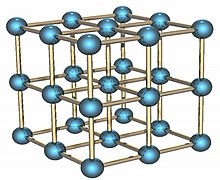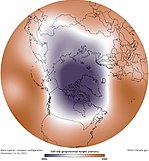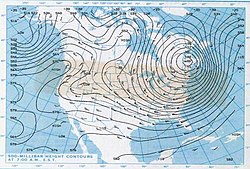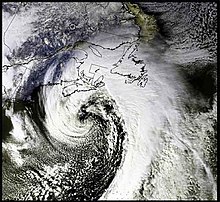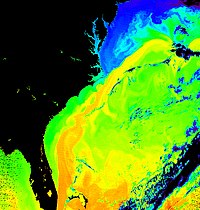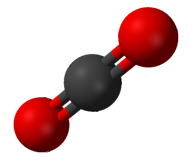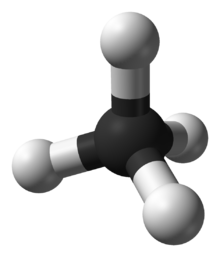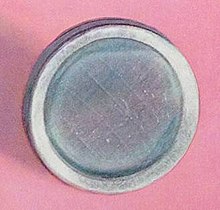 | |||||||||||||||||||||||||
| Polonium | |||||||||||||||||||||||||
|---|---|---|---|---|---|---|---|---|---|---|---|---|---|---|---|---|---|---|---|---|---|---|---|---|---|
| Pronunciation | /pəˈloʊniəm/ | ||||||||||||||||||||||||
| Allotropes | α, β | ||||||||||||||||||||||||
| Appearance | silvery | ||||||||||||||||||||||||
| Mass number | 209 (most stable isotope) | ||||||||||||||||||||||||
| Polonium in the periodic table | |||||||||||||||||||||||||
| |||||||||||||||||||||||||
| Atomic number (Z) | 84 | ||||||||||||||||||||||||
| Group | group 16 (chalcogens) | ||||||||||||||||||||||||
| Period | period 6 | ||||||||||||||||||||||||
| Block | p-block | ||||||||||||||||||||||||
| Element category | Post-transition metal, but this status is disputed | ||||||||||||||||||||||||
| Electron configuration | [Xe] 4f14 5d10 6s2 6p4 | ||||||||||||||||||||||||
Electrons per shell
| 2, 8, 18, 32, 18, 6 | ||||||||||||||||||||||||
| Physical properties | |||||||||||||||||||||||||
| Phase at STP | solid | ||||||||||||||||||||||||
| Melting point | 527 K (254 °C, 489 °F) | ||||||||||||||||||||||||
| Boiling point | 1235 K (962 °C, 1764 °F) | ||||||||||||||||||||||||
| Density (near r.t.) | alpha: 9.196 g/cm3 beta: 9.398 g/cm3 | ||||||||||||||||||||||||
| Heat of fusion | ca. 13 kJ/mol | ||||||||||||||||||||||||
| Heat of vaporization | 102.91 kJ/mol | ||||||||||||||||||||||||
| Molar heat capacity | 26.4 J/(mol·K) | ||||||||||||||||||||||||
Vapor pressure
| |||||||||||||||||||||||||
| Atomic properties | |||||||||||||||||||||||||
| Oxidation states | −2, +2, +4, +5, +6 (an amphoteric oxide) | ||||||||||||||||||||||||
| Electronegativity | Pauling scale: 2.0 | ||||||||||||||||||||||||
| Ionization energies |
| ||||||||||||||||||||||||
| Atomic radius | empirical: 168 pm | ||||||||||||||||||||||||
| Covalent radius | 140±4 pm | ||||||||||||||||||||||||
| Van der Waals radius | 197 pm | ||||||||||||||||||||||||
| Spectral lines of polonium | |||||||||||||||||||||||||
| Other properties | |||||||||||||||||||||||||
| Natural occurrence | from decay | ||||||||||||||||||||||||
| Crystal structure | cubic
α-Po | ||||||||||||||||||||||||
| Crystal structure | rhombohedral
β-Po | ||||||||||||||||||||||||
| Thermal expansion | 23.5 µm/(m·K) (at 25 °C) | ||||||||||||||||||||||||
| Thermal conductivity | 20 W/(m·K) (?) | ||||||||||||||||||||||||
| Electrical resistivity | α: 0.40 µΩ·m (at 0 °C) | ||||||||||||||||||||||||
| Magnetic ordering | nonmagnetic | ||||||||||||||||||||||||
| CAS Number | 7440-08-6 | ||||||||||||||||||||||||
| History | |||||||||||||||||||||||||
| Naming | after Polonia, Latin for Poland, homeland of Marie Curie | ||||||||||||||||||||||||
| Discovery | Pierre and Marie Curie (1898) | ||||||||||||||||||||||||
| First isolation | Willy Marckwald (1902) | ||||||||||||||||||||||||
| Main isotopes of polonium | |||||||||||||||||||||||||
| |||||||||||||||||||||||||
Polonium is a chemical element with the symbol Po and atomic number 84. A rare and highly radioactive metal with no stable isotopes, polonium is chemically similar to selenium and tellurium, though its metallic character resembles that of its horizontal neighbors in the periodic table: thallium, lead, and bismuth. Due to the short half-life of all its isotopes, its natural occurrence is limited to tiny traces of the fleeting polonium-210 (with a half-life of 138 days) in uranium ores, as it is the penultimate daughter of natural uranium-238. Though slightly longer-lived isotopes exist, they are much more difficult to produce. Today, polonium is usually produced in milligram quantities by the neutron irradiation of bismuth. Due to its intense radioactivity, which results in the radiolysis of chemical bonds and radioactive self-heating, its chemistry has mostly been investigated on the trace scale only.
Polonium was discovered in 1898 by Marie and Pierre Curie, when it was extracted from the uranium ore pitchblende and identified solely by its strong radioactivity: it was the first element to be so discovered. Polonium was named after Marie Curie's homeland of Poland. Polonium has few applications, and those are related to its radioactivity: heaters in space probes, antistatic devices, sources of neutrons and alpha particles, and poison. It is a radioactive element, and extremely dangerous to humans.
Characteristics
210Po is an alpha emitter that has a half-life of 138.4 days; it decays directly to its stable daughter isotope, 206Pb. A milligram (5 curies) of 210Po emits about as many alpha particles per second as 5 grams of 226Ra. A few curies (1 curie equals 37 gigabecquerels, 1 Ci = 37 GBq) of 210Po emit a blue glow which is caused by ionisation of the surrounding air.
About one in 100,000 alpha emissions causes an excitation in the
nucleus which then results in the emission of a gamma ray with a maximum
energy of 803 keV.
Solid state form
The alpha form of solid polonium.
Polonium is a radioactive element that exists in two metallic allotropes. The alpha form is the only known example of a simple cubic crystal structure in a single atom basis at STP, with an edge length of 335.2 picometers; the beta form is rhombohedral. The structure of polonium has been characterized by X-ray diffraction and electron diffraction.
210Po (in common with 238Pu) has the ability to become airborne with ease: if a sample is heated in air to 55 °C (131 °F), 50% of it is vaporized in 45 hours to form diatomic Po2 molecules, even though the melting point of polonium is 254 °C (489 °F) and its boiling point is 962 °C (1,764 °F).
More than one hypothesis exists for how polonium does this; one suggestion is that small clusters of polonium atoms are spalled off by the alpha decay.
Chemistry
The chemistry of polonium is similar to that of tellurium, although it also shows some similarities to its neighbor bismuth due to its metallic character. Polonium dissolves readily in dilute acids but is only slightly soluble in alkalis. Polonium solutions are first colored in pink by the Po2+ ions, but then rapidly become yellow because alpha radiation from polonium ionizes the solvent and converts Po2+ into Po4+. This process is accompanied by bubbling and emission of heat and light by glassware due to the absorbed alpha particles; as a result, polonium solutions are volatile and will evaporate within days unless sealed. At pH about 1, polonium ions are readily hydrolyzed and complexed by acids such as oxalic acid, citric acid, and tartaric acid.
Compounds
Polonium has no common compounds, and almost all of its compounds are synthetically created; more than 50 of those are known. The most stable class of polonium compounds are polonides, which are prepared by direct reaction of two elements. Na2Po has the antifluorite structure, the polonides of Ca, Ba, Hg, Pb and lanthanides form a NaCl lattice, BePo and CdPo have the wurtzite and MgPo the nickel arsenide
structure. Most polonides decompose upon heating to about 600 °C,
except for HgPo that decomposes at ~300 °C and the lanthanide polonides,
which do not decompose but melt at temperatures above 1000 °C. For
example, PrPo melts at 1250 °C and TmPo at 2200 °C. PbPo is one of the very few naturally occurring polonium compounds, as polonium alpha decays to form lead.
Polonium hydride (PoH
2) is a volatile liquid at room temperature prone to dissociation; it is thermally unstable. Water is the only other known hydrogen chalcogenide which is a liquid at room temperature; however, this is due to hydrogen bonding. The two oxides PoO2 and PoO3 are the products of oxidation of polonium.
2) is a volatile liquid at room temperature prone to dissociation; it is thermally unstable. Water is the only other known hydrogen chalcogenide which is a liquid at room temperature; however, this is due to hydrogen bonding. The two oxides PoO2 and PoO3 are the products of oxidation of polonium.
Halides of the structure PoX2, PoX4 and PoF6 are known. They are soluble in the corresponding hydrogen halides, i.e., PoClX in HCl, PoBrX in HBr and PoI4 in HI. Polonium dihalides are formed by direct reaction of the elements or by reduction of PoCl4 with SO2 and with PoBr4 with H2S at room temperature. Tetrahalides can be obtained by reacting polonium dioxide with HCl, HBr or HI.
Other polonium compounds include potassium polonite as a polonite, polonate, acetate, bromate, carbonate, citrate, chromate, cyanide, formate, (II) and (IV) hydroxides, nitrate, selenate, selenite, monosulfide, sulfate, disulfate and sulfite.
Isotopes
Polonium has 42 known isotopes, all of which are radioactive. They have atomic masses that range from 186 to 227 u. 210Po (half-life 138.376 days) is the most widely available and is made via neutron capture by natural bismuth. The longer-lived 209Po (half-life 125.2±3.3 years, longest-lived of all polonium isotopes) and 208Po (half-life 2.9 years) can be made through the alpha, proton, or deuteron bombardment of lead or bismuth in a cyclotron.
History
Tentatively called "radium F", polonium was discovered by Marie and Pierre Curie in 1898, and was named after Marie Curie's native land of Poland (Latin: Polonia). Poland at the time was under Russian, German, and Austro-Hungarian partition,
and did not exist as an independent country. It was Curie's hope that
naming the element after her native land would publicize its lack of
independence. Polonium may be the first element named to highlight a political controversy.
This element was the first one discovered by the Curies while they were investigating the cause of pitchblende radioactivity. Pitchblende, after removal of the radioactive elements uranium and thorium,
was more radioactive than the uranium and thorium combined. This
spurred the Curies to search for additional radioactive elements. They
first separated out polonium from pitchblende in July 1898, and five
months later, also isolated radium. German scientist Willy Marckwald
successfully isolated 3 milligrams of polonium in 1902, though at the
time he believed it was a new element, which he dubbed
"radio-tellurium", and it was not until 1905 that it was demonstrated to
be the same as polonium.
In the United States, polonium was produced as part of the Manhattan Project's Dayton Project during World War II. Polonium and beryllium were the key ingredients of the 'Urchin' initiator at the center of the bomb's spherical pit. 'Urchin' initiated the nuclear chain reaction at the moment of prompt-criticality to ensure that the weapon did not fizzle. 'Urchin' was used in early U.S. weapons; subsequent U.S. weapons utilized a pulse neutron generator for the same purpose.
Much of the basic physics of polonium was classified until after the war. The fact that it was used as an initiator was classified until the 1960s.
The Atomic Energy Commission and the Manhattan Project funded human experiments
using polonium on five people at the University of Rochester between
1943 and 1947. The people were administered between 9 and 22 microcuries (330 and 810 kBq) of polonium to study its excretion.
Occurrence and production
Polonium is a very rare element in nature because of the short half-life of all its isotopes. 210Po, 214Po, and 218Po appear in the decay chain of 238U; thus polonium can be found in uranium ores at about 0.1 mg per metric ton (1 part in 1010),
which is approximately 0.2% of the abundance of radium. The amounts in
the Earth's crust are not harmful. Polonium has been found in tobacco smoke from tobacco leaves grown with phosphate fertilizers.
Because it is present in small concentrations, isolation of
polonium from natural sources is a tedious process. The largest batch of
the element ever extracted, performed in the first half of the 20th
century, contained only 40 Ci (1.5 TBq) (9 mg) of polonium-210 and was obtained by processing 37 tonnes of residues from radium production. Polonium is now usually obtained by irradiating bismuth with high-energy neutrons or protons.
In 1934, an experiment showed that when natural 209Bi is bombarded with neutrons, 210Bi is created, which then decays to 210Po via beta-minus decay. The final purification is done pyrochemically followed by liquid-liquid extraction techniques. Polonium may now be made in milligram amounts in this procedure which uses high neutron fluxes found in nuclear reactors. Only about 100 grams are produced each year, practically all of it in Russia, making polonium exceedingly rare.
This process can cause problems in lead-bismuth based liquid metal cooled nuclear reactors such as those used in the Soviet Navy's K-27. Measures must be taken in these reactors to deal with the unwanted possibility of 210Po being released from the coolant.
The longer-lived isotopes of polonium, 208Po and 209Po, can be formed by proton or deuteron bombardment of bismuth using a cyclotron. Other more neutron-deficient and more unstable isotopes can be formed by the irradiation of platinum with carbon nuclei.
Applications
Polonium-based sources of alpha particles were produced in the former Soviet Union. Such sources were applied for measuring the thickness of industrial coatings via attenuation of alpha radiation.
Because of intense alpha radiation, a one-gram sample of 210Po will spontaneously heat up to above 500 °C (932 °F) generating about 140 watts of power. Therefore, 210Po is used as an atomic heat source to power radioisotope thermoelectric generators via thermoelectric materials. For example, 210Po heat sources were used in the Lunokhod 1 (1970) and Lunokhod 2 (1973) Moon rovers to keep their internal components warm during the lunar nights, as well as the Kosmos 84 and 90 satellites (1965).
The alpha particles emitted by polonium can be converted to
neutrons using beryllium oxide, at a rate of 93 neutrons per million
alpha particles. Thus Po-BeO mixtures or alloys are used as a neutron source, for example, in a neutron trigger or initiator for nuclear weapons
and for inspections of oil wells. About 1500 sources of this type, with
an individual activity of 1,850 Ci (68 TBq), have been used annually in
the Soviet Union.
Polonium was also part of brushes or more complex tools that eliminate static charges in photographic plates, textile mills, paper rolls, sheet plastics, and on substrates (such as automotive) prior to the application of coatings. Alpha particles emitted by polonium ionize air molecules that neutralize charges on the nearby surfaces. Some anti-static brushes contain up to 500 microcuries (20 MBq) of 210Po as a source of charged particles for neutralizing static electricity. In the US, devices with no more than 500 μCi (19 MBq) of (sealed) 210Po per unit can be bought in any amount under a "general license",
which means that a buyer need not be registered by any authorities.
Polonium needs to be replaced in these devices nearly every year because
of its short half-life; it is also highly radioactive and therefore has
been mostly replaced by less dangerous beta particle sources.
Tiny amounts of 210Po are sometimes used in the
laboratory and for teaching purposes—typically of the order of 4–40 kBq
(0.11–1.08 μCi), in the form of sealed sources, with the polonium
deposited on a substrate or in a resin or polymer matrix—are often
exempt from licensing by the NRC and similar authorities as they are not
considered hazardous. Small amounts of 210Po are
manufactured for sale to the public in the United States as 'needle
sources' for laboratory experimentation, and they are retailed by
scientific supply companies. The polonium is a layer of plating which in
turn is plated with a material such as gold, which allows the alpha radiation
(used in experiments such as cloud chambers) to pass while preventing
the polonium from being released and presenting a toxic hazard.
According to United Nuclear, they typically sell between four and eight such sources per year.
Polonium spark plugs were marketed by Firestone
from 1940 to 1953. While the amount of radiation from the plugs was
minuscule and not a threat to the consumer, the benefits of such plugs
quickly diminished after approximately a month because of polonium's
short half-life and because buildup on the conductors would block the
radiation that improved engine performance. (The premise behind the
polonium spark plug, as well as Alfred Matthew Hubbard's prototype radium
plug that preceded it, was that the radiation would improve ionization
of the fuel in the cylinder and thus allow the motor to fire more
quickly and efficiently.)
Biology and toxicity
Overview
Polonium is highly dangerous and has no biological role. By mass, polonium-210 is around 250,000 times more toxic than hydrogen cyanide (the LD50 for 210Po is less than 1 microgram for an average adult (see below) compared with about 250 milligrams for hydrogen cyanide). The main hazard is its intense radioactivity (as an alpha emitter), which makes it difficult to handle safely. Even in microgram amounts, handling 210Po is extremely dangerous, requiring specialized equipment (a negative pressure alpha glove box
equipped with high-performance filters), adequate monitoring, and
strict handling procedures to avoid any contamination. Alpha particles
emitted by polonium will damage organic tissue easily if polonium is
ingested, inhaled, or absorbed, although they do not penetrate the epidermis
and hence are not hazardous as long as the alpha particles remain
outside the body. Wearing chemically resistant and intact gloves is a
mandatory precaution to avoid transcutaneous diffusion of polonium directly through the skin. Polonium delivered in concentrated nitric acid can easily diffuse through inadequate gloves (e.g., latex gloves) or the acid may damage the gloves.
Polonium does not have toxic chemical properties.
It has been reported that some microbes can methylate polonium by the action of methylcobalamin. This is similar to the way in which mercury, selenium, and tellurium are methylated in living things to create organometallic
compounds. Studies investigating the metabolism of polonium-210 in rats
have shown that only 0.002 to 0.009% of polonium-210 ingested is
excreted as volatile polonium-210.
Acute effects
The median lethal dose (LD50) for acute radiation exposure is about 4.5 Sv. The committed effective dose equivalent 210Po is 0.51 µSv/Bq if ingested, and 2.5 µSv/Bq if inhaled.[79] So a fatal 4.5 Sv dose can be caused by ingesting 8.8 MBq (240 μCi), about 50 nanograms (ng), or inhaling 1.8 MBq (49 μCi), about 10 ng. One gram of 210Po could thus in theory poison 20 million people of whom 10 million would die. The actual toxicity of 210Po is lower than these estimates because radiation exposure that is spread out over several weeks (the biological half-life of polonium in humans is 30 to 50 days) is somewhat less damaging than an instantaneous dose. It has been estimated that a median lethal dose of 210Po is 15 megabecquerels (0.41 mCi), or 0.089 micrograms (μg), still an extremely small amount. For comparison, one grain of table salt is about 0.06 mg = 60 μg.
Long term (chronic) effects
In
addition to the acute effects, radiation exposure (both internal and
external) carries a long-term risk of death from cancer of 5–10% per Sv. The general population is exposed to small amounts of polonium as a radon daughter in indoor air; the isotopes 214Po and 218Po are thought to cause the majority of the estimated 15,000–22,000 lung cancer deaths in the US every year that have been attributed to indoor radon. Tobacco smoking causes additional exposure to polonium.
Regulatory exposure limits and handling
The maximum allowable body burden for ingested 210Po
is only 1.1 kBq (30 nCi), which is equivalent to a particle massing
only 6.8 picograms. The maximum permissible workplace concentration of
airborne 210Po is about 10 Bq/m3 (3×10−10 µCi/cm3). The target organs for polonium in humans are the spleen and liver.
As the spleen (150 g) and the liver (1.3 to 3 kg) are much smaller than
the rest of the body, if the polonium is concentrated in these vital
organs, it is a greater threat to life than the dose which would be
suffered (on average) by the whole body if it were spread evenly
throughout the body, in the same way as caesium or tritium (as T2O).
210Po is widely used in industry, and readily available with little regulation or restriction.
In the US, a tracking system run by the Nuclear Regulatory Commission
was implemented in 2007 to register purchases of more than 16 curies
(590 GBq) of polonium-210 (enough to make up 5,000 lethal doses). The
IAEA "is said to be considering tighter regulations ... There is talk
that it might tighten the polonium reporting requirement by a factor of
10, to 1.6 curies (59 GBq)."
As of 2013, this is still the only alpha emitting byproduct material
available, as a NRC Exempt Quantity, which may be held without a
radioactive material license.
Polonium and its compounds must be handled in a glove box,
which is further enclosed in another box, maintained at a slightly
higher pressure than the glove box to prevent the radioactive materials
from leaking out. Gloves made of natural rubber do not provide sufficient protection against the radiation from polonium; surgical gloves are necessary. Neoprene gloves shield radiation from polonium better than natural rubber.
Cases of poisoning
20th century
Polonium
was administered to humans for experimental purposes from 1943 to 1947;
it was injected into four hospitalised patients, and orally given to a
fifth. Studies such as this were funded by the Manhattan Project
and the AEC and conducted at the University of Rochester. The objective
was to obtain data on human excretion of polonium to correlate with
more extensive data from rats. Patients selected as subjects were chosen
because experimenters wanted persons who had not been exposed to
polonium either through work or accident. All subjects had incurable
diseases. Excretion of polonium was followed, and an autopsy was
conducted at that time on the deceased patient to determine which organs
absorbed the polonium. Patients' ages ranged from "early thirties" to
"early forties". The experiments were described in Chapter 3 of
Biological Studies with Polonium, Radium, and Plutonium, National
Nuclear Energy Series, Volume VI-3, McGraw-Hill, New York, 1950. Not
specified is the isotope under study, but at the time polonium-210 was
the most readily available polonium isotope. The DoE factsheet submitted
for this experiment reported no follow up on these subjects.
It has also been suggested that Irène Joliot-Curie
was the first person to die from the radiation effects of polonium. She
was accidentally exposed to polonium in 1946 when a sealed capsule of
the element exploded on her laboratory bench. In 1956, she died from leukemia.
According to the 2008 book The Bomb in the Basement, several deaths in Israel during 1957–1969 were caused by 210Po. A leak was discovered at a Weizmann Institute laboratory in 1957. Traces of 210Po
were found on the hands of Professor Dror Sadeh, a physicist who
researched radioactive materials. Medical tests indicated no harm, but
the tests did not include bone marrow. Sadeh died from cancer.
One of his students died of leukemia, and two colleagues died after a
few years, both from cancer. The issue was investigated secretly, and
there was never any formal admission that a connection between the leak
and the deaths had existed.
21st century
The cause of death in the 2006 homicide of Alexander Litvinenko, a Russian KGB agent who had defected to the British MI6 intelligence agency, was determined to be 210Po poisoning. According to Prof. Nick Priest of Middlesex University, an environmental toxicologist and radiation expert, speaking on Sky News on December 3, 2006, Litvinenko was probably the first person to die of the acute α-radiation effects of 210Po.
Abnormally high concentrations of 210Po were detected in July 2012 in clothes and personal belongings of the Palestinian leader Yasser Arafat,
a heavy smoker, who died on 11 November 2004 of uncertain causes. The
spokesman for the Institut de Radiophysique in Lausanne, Switzerland,
where those items were analyzed, stressed that the "clinical symptoms
described in Arafat's medical reports were not consistent with
polonium-210 and that conclusions could not be drawn as to whether the
Palestinian leader was poisoned or not", and that "the only way to
confirm the findings would be to exhume Arafat's body to test it for
polonium-210."
On 27 November 2012 Arafat's body was exhumed, and samples were taken
for separate analysis by experts from France, Switzerland and Russia. On 12 October 2013, The Lancet
published the group's finding that high levels of the element were
found in Arafat's blood, urine, and in saliva stains on his clothes and
toothbrush. The French tests later found some polonium but stated it was from "natural environmental origin".
Following later Russian tests, Vladimir Uiba, the head of the Russian
Federal Medical and Biological Agency, stated in December 2013 that
Arafat died of natural causes, and they had no plans to conduct further
tests.
Treatment
It has been suggested that chelation agents, such as British Anti-Lewisite (dimercaprol), can be used to decontaminate humans. In one experiment, rats were given a fatal dose of 1.45 MBq/kg (8.7 ng/kg) of 210Po;
all untreated rats were dead after 44 days, but 90% of the rats treated with the chelation agent
HOEtTTC remained alive for 5 months.
Detection in biological specimens
Polonium-210
may be quantified in biological specimens by alpha particle
spectrometry to confirm a diagnosis of poisoning in hospitalized
patients or to provide evidence in a medicolegal death investigation.
The baseline urinary excretion of polonium-210 in healthy persons due to
routine exposure to environmental sources is normally in a range of
5–15 mBq/day. Levels in excess of 30 mBq/day are suggestive of excessive
exposure to the radionuclide.
Occurrence in humans and the biosphere
Polonium-210 is widespread in the biosphere, including in human tissues, because of its position in the uranium-238 decay chain. Natural uranium-238 in the Earth's crust decays through a series of solid radioactive intermediates including radium-226 to the radioactive noble gas radon-222,
some of which, during its 3.8-day half-life, diffuses into the
atmosphere. There it decays through several more steps to polonium-210,
much of which, during its 138-day half-life, is washed back down to the
Earth's surface, thus entering the biosphere, before finally decaying to
stable lead-206.
As early as the 1920s Antoine Lacassagne, using polonium provided by his colleague Marie Curie, showed that the element has a specific pattern of uptake in rabbit tissues, with high concentrations, particularly in liver, kidney, and testes.
More recent evidence suggests that this behavior results from polonium
substituting for its congener sulfur, also in group 16 of the periodic
table, in sulfur-containing amino-acids or related molecules and that similar patterns of distribution occur in human tissues.
Polonium is indeed an element naturally present in all humans,
contributing appreciably to natural background dose, with wide
geographical and cultural variations, and particularly high levels in
arctic residents, for example.
Tobacco
Polonium-210 in tobacco contributes to many of the cases of lung cancer worldwide. Most of this polonium is derived from lead-210 deposited on tobacco leaves from the atmosphere; the lead-210 is a product of radon-222 gas, much of which appears to originate from the decay of radium-226 from fertilizers applied to the tobacco soils.
The presence of polonium in tobacco smoke has been known since the early 1960s.
Some of the world's biggest tobacco firms researched ways to remove the
substance—to no avail—over a 40-year period. The results were never
published.
Food
Polonium is found in the food chain, especially in seafood.



